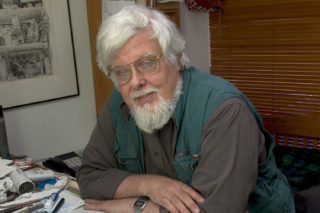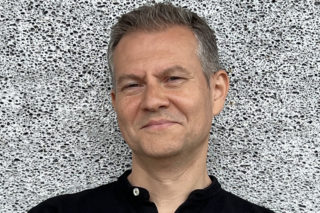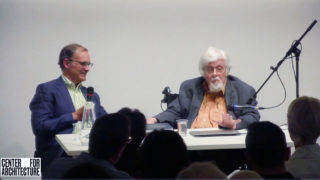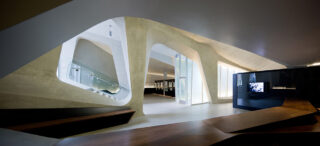James Wines: Re-Thinking it All
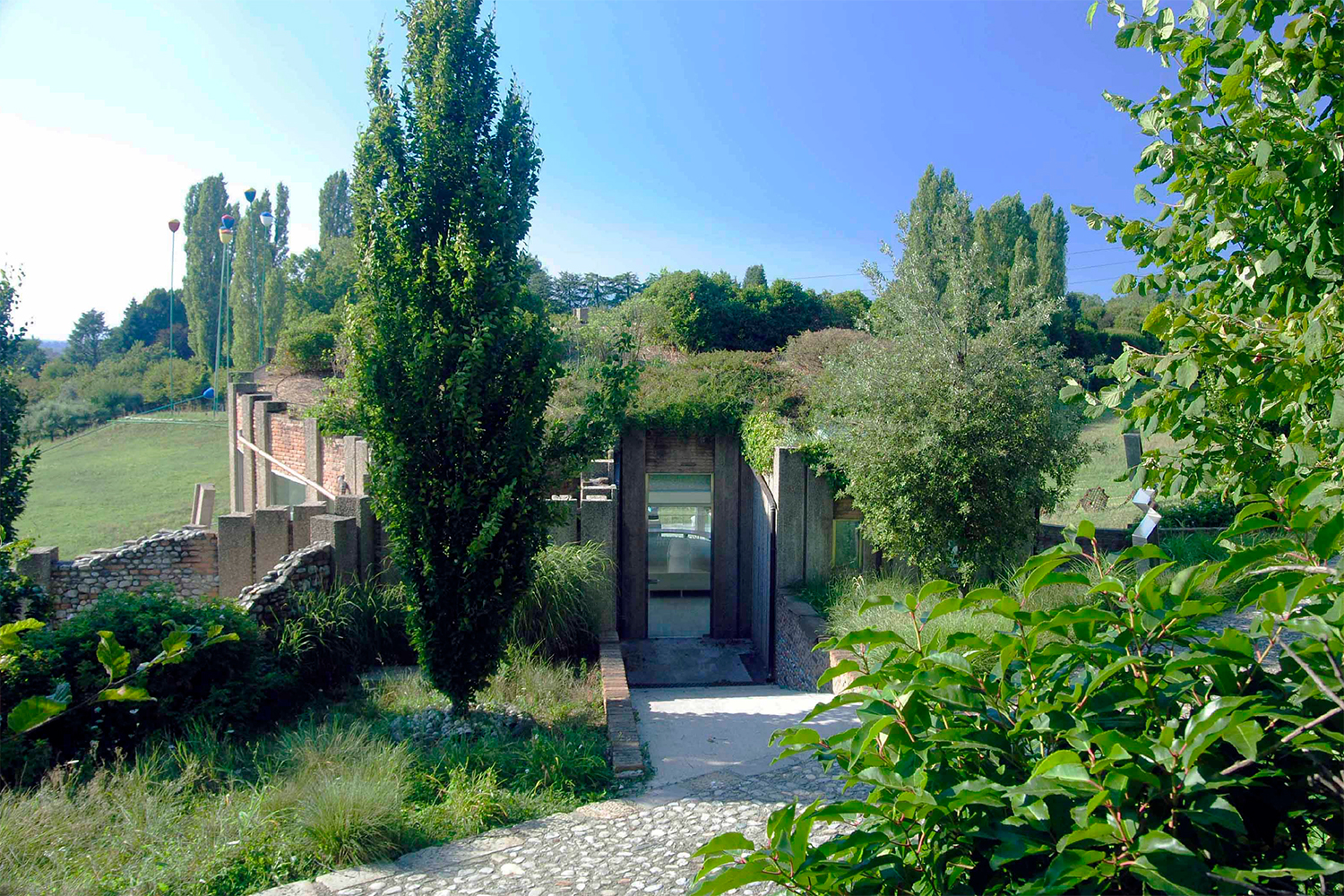
Join the Center for Architecture for a lecture by James Wines, President of SITE NY, as he explores the messages communicated, impact on the natural environment, and cost implications of buildings and public art since the 1960s. In this program, Wines credits the influence of aesthetic innovation, contextual sensitivity, and economical construction achieved at a smaller scale as an alternative to the current architecture profession’s tendency to favor massive structures based on elaborate formal strategies. The lecture will also address the challenges of re-thinking public works in a post-pandemic world.
“Forcing yourself to use restricted means is the sort of restraint that liberates invention. It obliges you to make a kind of progress you can’t even imagine in advance.” – Pablo Picasso
Speaker:
James Wines, Founder and President, SITE; Professor of Architecture, Penn State University
Interviewers:
Barry Bergdoll, Hon. AIANY, Meyer Schapiro Professor of Art History and Archaeology, Columbia University
Vladimir Belogolovsky, Principal, Intercontinental Curatorial Project
About the Speakers:
James Wines was born in Chicago, IL in 1932 and is the founder and president of SITE, an environmental art and architecture organization chartered in New York City in 1970. He is the former Chairman of Environmental Design at Parsons School of Design and a retired Professor of Architecture at Penn State University. His architecture, landscape, and public space projects are based on site-specific responses to surrounding contexts. Wines’ educational philosophy advocates for integrative thinking as a means of including multi-disciplinary ideas from outside the design professions.
Wines has written seven books on art and design, including On Site-On Energy (Scribners and Sons, 1974), De-Architecture (Rizzoli International, 1987), and Green Architecture (Taschen Verlag, 2000). He has designed more than 150 buildings, public spaces, exhibitions, landscapes, and environmental art works for private and municipal clients in 11 countries. Wines was awarded the Smithsonian Institution’s 2013 National Design Award for Lifetime Achievement, the 2013 ANCE Annual Award for an International Architect, and the 1995 Chrysler Award for Design Innovation. He is also the recipient of fellowships and grants from the National Endowment for the Arts, the Kress Foundation, the American Academy in Rome, the Guggenheim Foundation, the Rockefeller Foundation, the Graham Foundation, and the Ford Foundation. In 2021, the Tchoban Museum in Berlin hosted a retrospective of his drawings for SITE. Wines continues to work on international art and design projects, write, lecture, and engage in educational programs based on environmental initiatives.
Barry Bergdoll is Meyer Schapiro Professor of art history in the Department of Art History and Archaeology at Columbia University and curator in the Department of Architecture and Design at the Museum of Modern Art, New York, where from 2007 to 2013 he served as Philip Johnson Chief Curator of Architecture and Design. Bergdoll graduated from Columbia University in 1977 and studied at King’s College, Cambridge University on a Kellett Fellowship 1977-79 before returning to Columbia to complete his Ph.D. in 1986. His interests center on modern architectural history, with a particular emphasis on France and Germany since 1789. Trained in art history rather than architecture, he has an approach most closely allied with cultural history and the history and sociology of professions. Bergdoll’s interests also include the intersections of architecture and new technologies and cultures representations in the modern period, especially photography and film. He has worked on several film productions about architecture, in addition to curating numerous exhibitions. He is currently working on the transformation of the Mellon Lectures delivered at the National Gallery into a book on the history and problematics of exhibiting architecture. Other books include his widely used textbook European Architecture 1750-1890 (Oxford History of Art), and studies on Karl Friedrich Schinkel, Mies van der Rohe, and other major figures of 19th and 20th century architecture.
Vladimir Belogolovsky is an American curator and critic. He studied engineering in Ukraine and graduated from the Cooper Union School of Architecture in 1996. His New York-based nonprofit, the Curatorial Project, focuses on curating and designing exhibitions worldwide. Belogolovsky writes for Arquitectura Viva and AZURE and is a columnist on ArchDaily and STIR. He has interviewed more than 400 leading international architects and has written 15 books, including Imagine Buildings Floating Like Clouds (IMAGES, 2022), Architectural Guide Chicago (DOM, 2022), Architectural Guide New York (DOM, 2019), Conversations with Architects (DOM, 2015), Harry Seidler: Lifework (Rizzoli, 2014), and Soviet Modernism: 1955-1985 (TATLIN, 2010). Belogolovsky has also curated over 50 exhibitions, including the Architects’ Voices Series, Emilio Ambasz: Architecture Toward Nature, Harry Seidler: Painting Toward Architecture, Green House at the Zodchestvo International Architecture Festival in Moscow, and Chess Game for the Russian Pavilion at the 11th Venice Architecture Biennale (2008).
COVID-19 vaccinations and face masks are strongly encouraged for all visitors. Read our full Health and Safety Protocol here.
